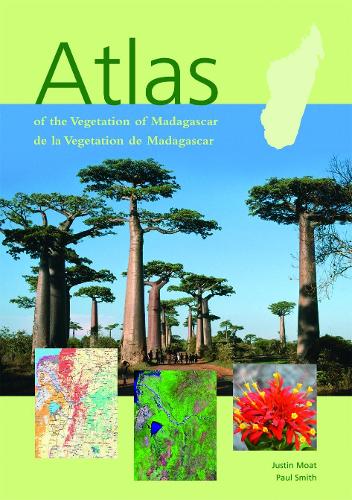
Atlas of the Vegetation of Madagascar: (Atlas de la Vegetation de Madagascar)
(Hardback)
Publishing Details
Atlas of the Vegetation of Madagascar: (Atlas de la Vegetation de Madagascar)
By (Author) Rafael Govaerts
By (author) David Simpson
By (author) Justin Moat
By (author) Dr. Paul Smith
Royal Botanic Gardens
Kew Publishing
1st October 2007
United Kingdom
Classifications
Professional and Scholarly
Non Fiction
Trees, wildflowers and plants: general interest
580.96910223
Physical Properties
Hardback
780
Width 297mm, Height 420mm
Description
Madagascar is the world'sfourth largest island, and isrecognised as one of theworld's top ten hotspots forbiodiversity. It is estimatedthat there are about 10,000plant species on the island.Of these, 80% or moreoccur nowhere else. Manarrived in Madagascar just2,000 years ago and sincehas cleared much of the island's forest.Supported by the Critical Ecosystem Partnership Fund,this atlas, in English and French, gives a history ofvegetation mapping in Madagascar, the methodologyused in compiling this atlas and detailed descriptionsof each vegetation type illustrated with photographsand diagrams. Trends in deforestation, extent ofoccurrence and levels of protection are assessed foreach vegetation type.The atlas itself comprises 36 detailed A3 maps, all inhigh resolution colour, detailing the extent of eachvegetation type, roads, trails, rivers, airports andreserves, and a full place name index.
Author Bio
For 15 years Justin Moat has been employed at The Royal Botanic Gardens, Kew with the initial remit of setting up a GIS unit, which he currently heads. After completing his masters on mapping Madagascar's vegetation, he continues to take every opportunity to work on this unique island.Paul Smith is an ecologist with practical experience in vegetation mapping, botanical inventory and survey, impact assessment, park management systems and ecotourism. He has a wide and detailed knowledge of the plants of southern, central and east Africa, and has twenty years experience working in Africa and Madagascar. Paul is Head of the Seed Conservation Department at Kew and leader of the Millennium Seed Bank Project.
